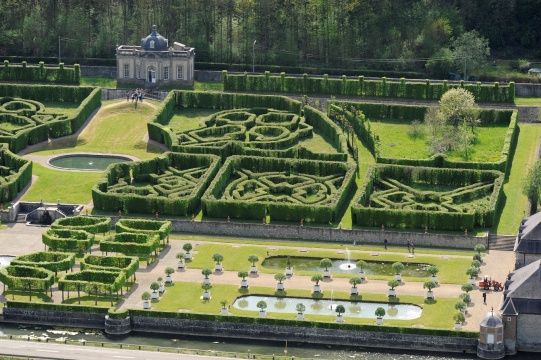The Laubespin-Lagarde Fund, managed by the King Baudouin Foundation, has undertaken a vast programme to enhance the gardens of the Freÿr estate. Archaeological excavations have been conducted on the land, whilst research into the orange trees in the gardens have resulted in being able to determine the most effective way of looking after and safeguarding their genetic heritage. The study day will look at the history of the collection and the techniques of cultivation will be examined and set in a more general context. It goes without saying that there will also be a visit to the gardens and orange trees! After lunch, the programme will turn to the archaeological excavations, from a historical point of view as well as that of the landscape, and we will examine what their use was within the framework of the garden restoration.
The study day will begin at 9h30 on 15 October 2015, at the Château de Freÿr (Freÿr 12, 5540 Hastière). Please reserve by 9 October latest: [email protected] !
The oldest plants found at Freÿr are almost 400 years old. They have probably been at Freÿr for 250 years. The desire to cultivate orange trees in European gardens goes back to the Middle Ages and the idea of establishing the biggest possible collection was linked to the fantasy of Paradise Lost and the Garden of Eden. The orange tree is an emblematic plant of this project. When the trees were planted at Freÿr, they were relatively small and they decorated the flower beds and borders. At the end of the 19th century, when they had become too big, the orange trees were moved towards the bottom of the garden. What makes the Freÿr collection unique is the fact that there is a significant number of trees almost 400 years old and that it contains very rare varieties and selections.
Archaeological excavations were undertaken in the garden with a view to better understanding parts of the gardens that are not mentioned in the archive documents or sources, such as the garden wall, tree-covered walks that have disappeared and the effects of introducing a railway on the structure of the upper part of the garden. In addition to researching the natural aspect of the site, the excavations have also thrown light on various aspects of its history: when cultivation was started, the Gallo-Roman occupation, land that could be cultivated prior to the creation of the first garden, the conversion of the orchard into a vegetable garden and then an ash plantation.
